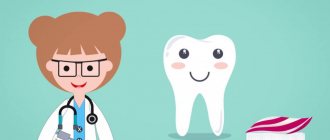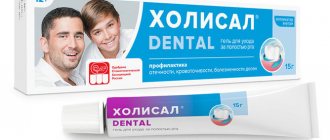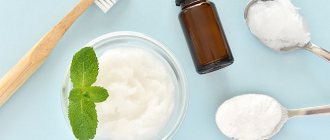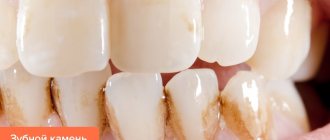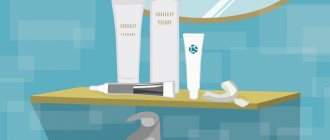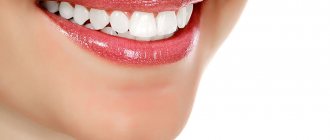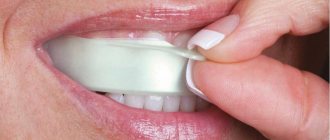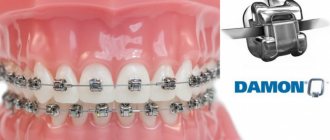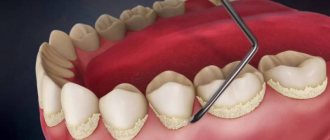Things to consider
- Before bleaching, be sure to pay attention to the material of the product and the symbols on the label. It should indicate at what temperature the laundry can be washed. This is important because many of the methods below use boiling water. For example, synthetics cannot be cleaned in hot water, unlike linen and cotton fabrics.
- If the item is expensive and you are afraid to experiment, it is better to take it to the dry cleaner.
- If the chosen method did not help the first time, then after washing you can repeat the bleaching using the same or a different method.
When to be careful
Every housewife knows that a fresh stain is easier to remove, and therefore tries not to put off washing until “later.” But if the stain is from coffee or tea, juice or grass, even timely soaking may not save the item. This does not mean that to achieve the desired you need to increase the dosage of the components included in the solution. In an effort to achieve perfect cleanliness, you can easily ruin your favorite item if you use the solution incorrectly:
- If a mixture of soda and peroxide is applied directly to the fabric, then the composition will need to be washed off no later than after 5 minutes. Otherwise, the threads will be damaged and the item will become unusable.
- Do not use a hot solution to soak items made from delicate fabrics. You can put things in a container with the prepared composition only after the water has cooled to room temperature.
- Sweat stains can be removed using baking soda and peroxide only from cotton fabrics.
- You cannot add industrial preparations to a self-prepared whitening composition.
By following all the rules of use, you can quite easily bleach bedding and underwear, children's clothes, women's blouses or men's white shirts using baking soda and hydrogen peroxide purchased at the pharmacy.
sodalab.ru
How to bleach white clothes with commercial bleach
- What does it cope with? With almost everything: eliminates stains, yellowness, grayness and even helps restore color to faded items.
- What fabrics is it suitable for? Depends on the composition.
There are a large number of different bleaches, chlorine- and oxygen-containing, on store shelves.
Products with chlorine work, but can thin the fabric and ruin the color. They are used only for linen and cotton.
Therefore, it is better to give preference to oxygen bleaches. They are suitable for all fabrics, even delicate ones, and do not require high temperatures. This is important if the item cannot be washed in hot water.
How to use bleaches may vary, so follow the instructions on the package. Such products and brands as “Persol”, ACE, “BOS”, “Ushasty Nyan”, Vanish, Amway have proven themselves to be excellent.
Most often, things need to be soaked for several hours in water with bleach and washed. Or add the product directly to the washing machine along with the powder.
If the stains are strong and the fabric allows it, you can boil the laundry with bleach for at least 15 minutes and wash it in a machine.
How does hydrogen peroxide work?
Hydrogen peroxide solution can be purchased at almost any pharmacy for a fairly low price, so anyone can use whitening with this product.
When this product gets on the surface of the enamel, an oxidative reaction occurs, which causes the compound to disintegrate into individual elements. When peroxide is used for teeth whitening, active oxygen is released, which affects the surface and inner layers of enamel. Due to this component, the process of splitting the elements that cause darkening of tooth enamel occurs.
Almost all medications used for teeth whitening contain hydrogen peroxide. This component is contained in pastes, gels, mouth guards, and special strips.
How to bleach white clothes with a mixture of powder, bleach, oil and soda
- What does it cope with? This is a very effective way to combat yellowness and all kinds of stains. The product can remove even very old stains.
- What fabrics is it suitable for? For cotton and linen.
Pour 1 cup (250 ml volume) of laundry detergent, 4 tablespoons of good powder bleach and 1 tablespoon of baking soda into a saucepan. Pour in 4 tablespoons of sunflower oil.
Pour 10 liters of boiling water, stir and put dry things there. The quantity of necessary components can be changed, maintaining the proportions.
Place the pan on low heat for 15–20 minutes and stir the laundry occasionally. Remove from heat and let sit overnight or 6-8 hours. Then wash the items in the machine.
Use in the treatment of stomatitis
If you have ulcers in your mouth, you can speed up healing by rinsing your mouth with hydrogen peroxide. Dilute it with water (1 tablespoon of 3 percent peroxide per glass of water) to avoid causing irritation and blistering (which can happen with high concentrations of hydrogen peroxide). Rinse your mouth with the solution for 30 seconds, spit it out and rinse with plain water.
How to bleach white things with laundry soap and soda
- What does it cope with? This method is as effective as the previous one. It helps perfectly even with old stains and yellowness.
- What fabrics is it suitable for? For cotton and linen.
Place the laundry in a container with three liters of warm water. Rub each item thoroughly with laundry soap. Add 3 tablespoons of baking soda, stir and leave for several hours.
Place the pan over low heat and simmer for about 1 hour, stirring occasionally. The liquid will become colored as it absorbs contaminants.
Rinse the laundry in warm water. Do this until it comes out clean.
Whitening Recipes
There are several methods of using hydrogen peroxide to whiten teeth. You can easily use them yourself at home.
Rinse
The simplest method of using hydrogen peroxide, which does not require mixing ingredients and preparing special treatments, is rinsing. But in order to achieve a positive effect, this procedure must be carried out in three stages:
- To begin with, teeth are cleaned. You should use toothpaste with a high level of fluoride. This component is used to enrich the enamel and usually prevents the process of its destruction. At this stage, increased strengthening of teeth occurs, which will act as a defense against the aggressive effect of peroxide on the structure of the teeth;
- The second stage involves rinsing. When rinsing, use a solution with peroxide. To do this, hydrogen peroxide is dissolved in water 1:1. Sometimes a ratio of 1:3 is used; this mixture is recommended for people with hypersensitivity of the oral mucosa;
- At the end, the oral cavity is rinsed from hydrogen peroxide. For this purpose, clean warm water is used.
After using this teeth whitening procedure, it is recommended to refrain from eating and drinking for the first 30 minutes.
With added baking soda
Baking soda is one of the ingredients that can be used at home to whiten teeth. But it is worth considering that its effect differs in many respects from the degree of bleaching with hydrogen peroxide. Teeth whitening with baking soda is based on the physical effect on the surface layer, because soda is an abrasive substance. But hydrogen peroxide provokes a chemical reaction. To whiten teeth, use a special mixture based on peroxide and baking soda. The main thing is to use the correct proportions, and also be able to use these components for whitening. Features of the preparation and use of a mixture with peroxide and baking soda:
- When preparing the product, you need to mix 3% hydrogen peroxide and baking soda in equal proportions;
- It is recommended to mix both components thoroughly. The result should be a paste with a soft and delicate consistency. It is not recommended to use a toothbrush during its application, because there will be a strong impact that can have a negative effect on the teeth;
- The finished mixture must be applied to the surface of the teeth using a cotton swab or finger. When applying, you should be careful not to touch the mucous membrane of the gums, otherwise severe irritation may occur;
- The mixture should be kept on the teeth for about three minutes, it is necessary to massage a little to improve the effect;
- After this, everything is washed off with water and the teeth are cleaned with a brush and toothpaste.
The main thing is to correctly follow all recommendations for using methods of teeth whitening with hydrogen peroxide. Also, when brushing your teeth in the morning and evening, you can add a few drops of peroxide to the paste, which will also improve the structure of your tooth enamel.
How to bleach white clothes with boric acid
- What does it cope with? A solution of boric acid is not able to remove yellowness. But it will rid things of grayness and return them to their former whiteness. For example, it will refresh old washed bed linen.
- What fabrics is it suitable for? For cotton and linen, as well as for synthetics, if it is not boiled.
Dissolve 2 tablespoons of boric acid in two liters of warm water. Leave the items in the mixture for 2 hours, stirring occasionally, and wash in the machine.
If the stains are old, boiling will help. To do this, place the container with things and the prepared solution on low heat. There is no need to soak the laundry. Boil for about 1 hour and throw in the washing machine.
Why do you need to boil laundry?
By boiling you can not only achieve whiteness, this method allows you to get rid of stains. Boiling water helps to disinfect things and cope with many infections. For example, when boiling they die:
- influenza viruses - almost instantly;
- pathogens of hepatitis B and C – in an hour;
- anthrax bacilli and even spores - in an hour;
- spore-forming tetanus bacillus and spores – after 3 hours;
- Staphylococcus aureus, which causes mastitis and severe illness in infants - almost instantly;
- fungi that cause fungal diseases.
Note! Not all pathogens are killed at 100°C, but this method can cope with a wide range of infections. Machine washing at 90°C is not a substitute for boiling, as lower temperatures are lethal to fewer bacteria.
It is useful to treat underwear in this way after a stay in the hospital or maternity hospital. It is recommended to disinfect towels by boiling after visiting a public bath, swimming pool or beach. This method is also good if there is an allergy sufferer in the family who cannot stand the smell of washing powder, because you can boil laundry with soda or laundry soap.
By boiling laundry, you can destroy clothing lice and their larvae - nits. This turns out to be relevant after the child’s stay in the camp where such a problem arose. It will destroy boiling water and dust mites, which thrive in house dust and bedding, causing inflammatory diseases of the skin and eyes.
The disadvantage of boiling is that only products made from natural fibers can be subjected to it. Synthetic fabrics will lose their original structure and become unsuitable for use. Some things made from natural raw materials are also at risk. These include clothing and bedspreads made of wool. An inadvertently boiled sweater can shrink by several sizes or even turn into something like a felt boot.
Important! It is not recommended to test new and good colored items with boiling water. Dyes often do not withstand temperature conditions, the item fades or becomes faded.
However, boiling laundry is useful if a child or adult cannot tolerate washing powders. Allergy sufferers are advised to wear items made from natural fabrics, and many of them can be washed well and bleached by boiling.
Methods of application
When treating, there are 3 options for using the solution.
External method
This method is used to treat ulcers and wounds. You need to mix water and peroxide 3 tbsp. l. and apply lotions to the affected area for 40-60 minutes.
Often the solution is added to the bath. You need to stay in such a bath for no longer than 20 minutes. To enhance the results, immediately after the bath you should take a quick, refreshing shower. Such baths are effective for skin problems, joint and stomach diseases.
Effective for tooth pain. To do this, you need to dissolve 2 tablets in 150 ml of liquid and rinse the mouth for 2-3 minutes.
Hydrogen peroxide helps whiten teeth, which is why it is found in many oral cleansers.
You can gargle with the solution during a sore throat. It kills bacteria and is able to penetrate into the most remote areas of the oral cavity.
Internal method
Hydrogen peroxide is diluted with a certain amount of water. This option is not recognized by doctors, but representatives of folk remedies often resort to this method in the treatment of serious pathologies.
When taken orally, the peroxide solution achieves the following results:
- beneficial effect on the functioning of the stomach and intestines. The acid-base balance is stabilized, stomach ulcers heal;
- blood circulation is saturated. Perhydrol, once inside, quickly spreads throughout the body, saturating the cells with oxygen, as a result of which the symptoms of oxygen starvation disappear;
- the immune system is strengthened;
- Toxic substances are removed from the body, rapid heartbeat and nausea disappear;
- promotes weight loss. If you take a peroxide solution in the morning on an empty stomach, your metabolism will normalize, which will help you lose weight. 20-30 minutes before meals you need to take 2-4 drops of a solution diluted in ¼ cup once a day. This procedure should be repeated no more than 3 times a week.
Intravenous method
There is a lot of controversy surrounding this method among scientists who prove the pros and cons of its use. Intravenous administration of the solution is considered the most dangerous. But if everything is done correctly, you can achieve an excellent result and the patient will feel much better.
Contraindications and overdose
Taking hydrogen peroxide orally is prohibited under the following conditions:
- diabetes;
- ulcer or gastritis;
- pancreatitis;
- during transplantation;
- period of bearing a child;
- lactation period;
- children and teenagers.
Some people, without thinking about the possible consequences, take the solution in unlimited quantities.
In case of overdose, the following conditions and reactions of the body may be observed:
- burn of the mucous membrane of the intestines and stomach;
- blockage of blood vessels;
- vomiting and nausea;
- internal hemorrhage;
- general poisoning;
- allergic reaction in the form of skin rashes or runny nose;
- drowsiness and lethargy;
- burning sensation in the stomach area.
Get rid of bad breath.
Can't get rid of bad breath even after brushing your teeth? An excellent alternative for mouth rinsing is hydrogen peroxide. Since hydrogen peroxide kills bacteria that cause bad breath, all it takes is rinsing your mouth for 30 seconds. You'll be surprised how effective this is. But again, don't overdo it, and use a peroxide rinse once a week, as peroxide kills the good bacteria in your mouth too.
